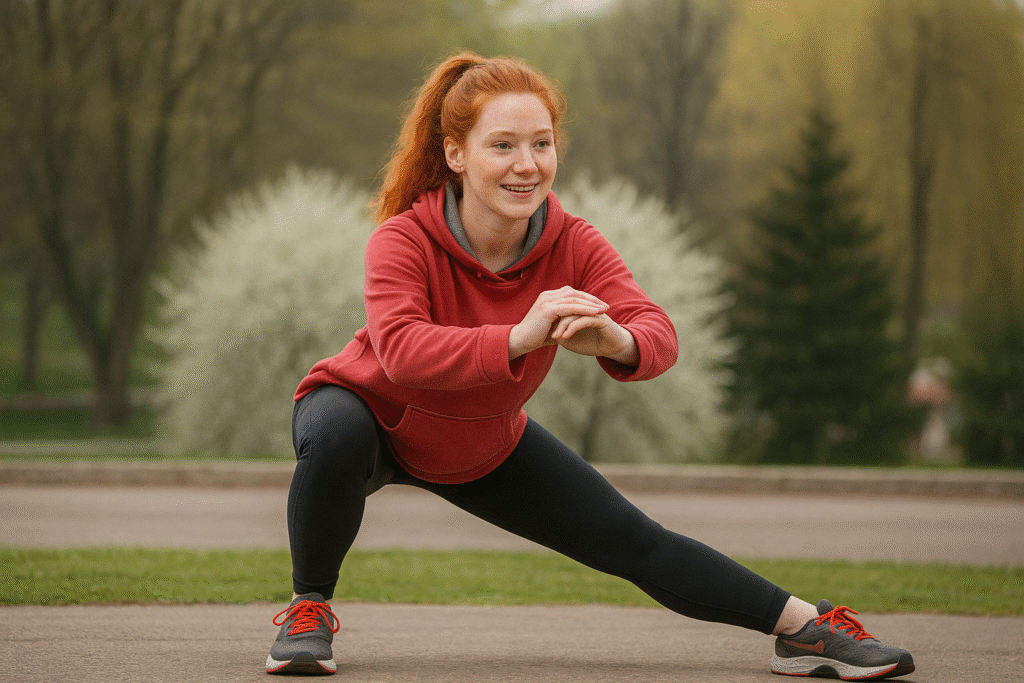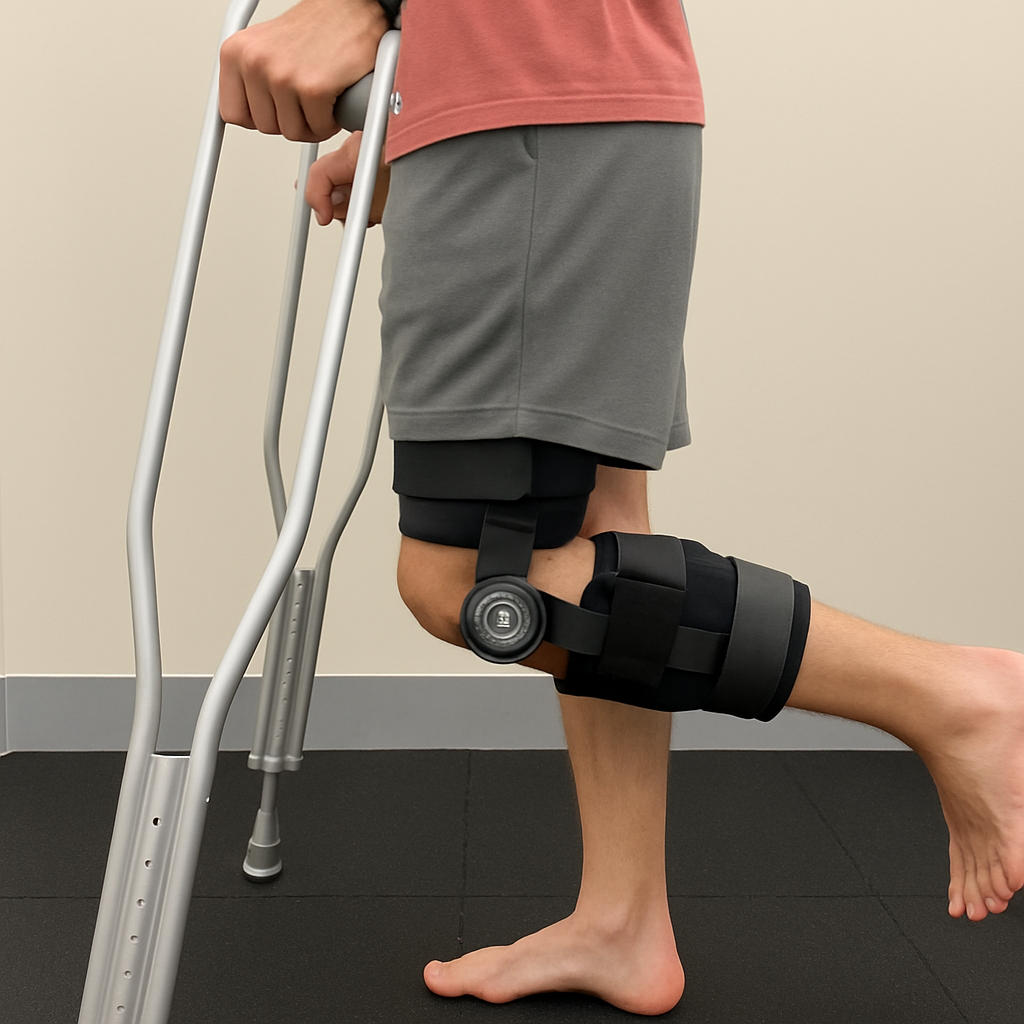
Disclaimer: While this is based on clinical research it is education only and should not be viewed as medical advice.
For decades, the moment someone heard “ACL tear,” the next word they usually heard was “surgery.” Whether it was a young athlete recovering from a soccer injury or an adult trying to stay active, surgery was often seen as the only way forward.
But emerging research is starting to challenge that assumption.
A recent study titled “ACL Healing After Rupture”, published in the British Journal of Sports Medicine, is flipping the script. Using high-resolution MRI scans, researchers tracked ACL injuries over time and discovered something remarkable: some ACLs are capable of healing naturally—with no surgery required.
Let’s break down what this means for families, athletes, and anyone facing this common knee injury.
📊 What the Study Found: Natural Healing Is Possible
The study followed 120 individuals with MRI-confirmed ACL ruptures who were treated either with surgery + rehab or rehab with the potential for surgery in the future. The individuals were monitored with follow-up imaging. These weren’t partial tears or mild sprains—they were full ruptures.
And yet, after just 6 months:
- A significant number of participants who did rehab alone (30 people) showed signs of ACL healing via MRI
(that means the ligament fibers reconnected and aligned properly) - At least two thirds of participants met clinical success criteria
(no major instability, good function, and able to return to activities) - Those who healed also scored higher in quality of life and sports performance tests than those who had ACL surgery in other comparative trials.
So what does “healing” mean in this context? It means the torn ligament was visibly and functionally reconnected—not just scar tissue, but biologically active, continuous ligament structure.
🧬 Not All ACL Tears Are the Same
One of the most interesting findings in this study is that the location and alignment of the tear mattered.
If the two torn ends of the ACL were close together, and if there wasn’t excessive inflammation or trauma to other knee structures, the chances of healing were much higher.
This suggests that for many people—especially those who begin rehab early and have isolated ACL injuries—non-operative care may lead to real, lasting recovery. So what’s the most impactful option out there for people trying to avoid surgery after an ACL tear? The Cross Bracing Protocol.
Cross Bracing Protocol – A Revolutionary Approach to ACL Healing Without Surgery

Skip the scalpel, consider the brace. If you’ve recently suffered an ACL tear in Hillsboro, Beaverton, Aloha, or anywhere in the Portland metro area, you might be surprised to learn that surgery isn’t your only option. The Cross Bracing Protocol (CBP) is changing the way we treat ACL injuries by giving the body a chance to heal the ligament naturally — and the outcomes are promising.
What Is the Cross Bracing Protocol?
Developed by Dr. Tom Cross and refined through years of research, the CBP is a non-surgical treatment protocol designed to help ruptured ACLs heal on their own. Instead of going straight to surgery, patients wear a brace that holds the knee in 90 degrees of flexion for 4 weeks, followed by progressive increases in mobility over 12 weeks total. This approach brings the torn ends of the ligament close together, encouraging natural tissue bridging and healing.
What the Research Says
In a published study of 80 patients who followed the Cross Bracing Protocol:
- 90% showed signs of ACL healing on MRI by 3 months post-injury
- 92% of those with optimal healing (Grade 1 on MRI) returned to their pre-injury sports
- These patients reported excellent function (Lysholm score: median 98/100) and high quality of life (ACLQOL score: 89/100)
- Only 14% re-injured their ACL — a rate comparable to or better than post-surgical outcomes
Why It Matters for Patients in Oregon
Whether you’re an athlete from Forest Grove, a weekend warrior in Portland, or a parent of a teen in Hillsboro who just tore their ACL, the CBP might offer a viable, evidence-based alternative to ACL surgery. It’s ideal for patients who are motivated, can commit to the protocol, and want to avoid graft harvesting and extended post-op limitations.
If you’re within 10 days of injury and your ACL tear is confirmed on MRI, ask your local orthopedic or sports medicine provider in Portland or surrounding areas whether you qualify for the Cross Bracing Protocol
🧠 Why This Matters for Kids, Teens, and Their Families
For parents of active kids between the ages of 10 and 20, an ACL tear can feel devastating not just for the kid but the parent also. It affects sports seasons, confidence, social life, and even future goals like college scholarships.
The traditional response—quick surgery—can feel like the “safe” choice. But it’s not always the best one. ACL reconstruction requires 9–12 months of recovery, carries surgical risks, and may not always restore the knee to full normalcy.
This new research offers hope that a structured rehab plan with careful monitoring might be all some kids need to return to sport and life—without surgery and with excellent outcomes.
It also means families can take a more informed, step-by-step approach instead of rushing into the operating room within weeks of diagnosis. The Cross Bracing Protocol is an intriguing option with scientific evidence behind it.
🦵 For Adults Staying Active: Surgery Isn’t Your Only Option
While we often think of ACL tears as a “young athlete” problem, they’re actually quite common in adults staying active through hiking, skiing, recreational sports, or even routine daily movement.
This study highlights that biological healing is not just for teenagers. Adults in their 40s, 50s, and even 60s can potentially heal ACL injuries with the right rehab strategy—especially if their knee remains relatively stable and they’re committed to a progressive program.
For many people, avoiding surgery also means avoiding time off work, prolonged driving restrictions, or the risks associated with anesthesia.
🏋️♀️ What Does Rehab Look Like?
A non-operative approach to ACL healing isn’t passive. It requires commitment to a structured program led by a skilled physical therapist. Typically, rehab focuses on:
- Bracing at first to protect the knee
- Reducing swelling and pain early on
- Restoring full range of motion
- Rebuilding strength in the quadriceps, hamstrings, and glutes
- Enhancing balance, coordination, and neuromuscular control
- Gradually reintroducing sport-specific activities
Progress is regularly evaluated, and if the knee shows signs of instability, surgery can still be considered later—on your terms.
✅ Key Takeaways
- ACL tears don’t always require surgery.
- High-resolution MRI scans have confirmed natural healing in a significant number of cases in this study.
- Most people who healed also reported better function and life satisfaction than surgical patients in past studies.
- Early, structured physical therapy and careful monitoring are essential.
- Not every tear will heal naturally—but many will.
- The Cross Bracing Protocol is an effective option for many to avoid surgery
🔁 It’s Okay to Wait and Watch
This research isn’t saying that ACL surgery is bad or unnecessary. It’s saying you don’t always have to rush into it.
You can start with rehab, see how your body responds, and re-evaluate. If surgery becomes necessary later, you’ll know it’s based on your personal experience—not assumptions or pressure.
🧭 Final Word
The phrase “ACL tear” doesn’t have to mean panic or surgery anymore. Thanks to advances in MRI imaging and growing evidence from studies like this one, we now know the body has more healing power than we once thought.
Whether you’re a parent helping your child navigate an injury or someone trying to stay active as an adult, it’s empowering to know that recovery without surgery is a real, evidence-based option.
Let your body show you what it’s capable of—then make your decisions from a place of confidence, not fear.
